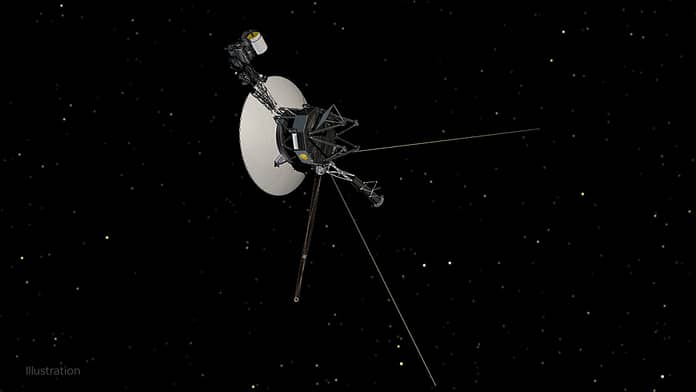The team will continue to closely monitor the signal to determine if the invalid data is coming directly from AACS or any other system involved in creating and transmitting telemetry data. Until the nature of the problem is better understood, the team cannot predict whether this could affect how long the spacecraft can collect and transmit scientific data.
Voyager 1 is currently 14.5 billion miles (23.3 billion km) from Earth, and it takes light 20 hours and 33 minutes to make that difference. This means that it takes about two days to send a message to Voyager 1 and get a response – a delay that the mission team is accustomed to.
“Such a puzzle is a bit like the trajectory at this point in the Voyager mission,” said Susan Dodd, Voyager 1 and 2 project manager at NASA’s Jet Propulsion Laboratory in Southern California. The spacecraft is approximately 45 years old, which exceeds mission planners’ expectations. We’re also in interstellar space – a highly radioactive environment where no spacecraft has ever flown. So there are some big challenges for the engineering team. But I think. If there is a way to solve this problem with AACS, our team will find it.”
It’s possible that the team won’t find the source of the error, Dodd said, and instead adapt to it. If they find the source, they may be able to fix the problem through software modifications, or perhaps by using one of the spacecraft’s redundant hardware systems.
It wouldn’t be the first time the Voyager team had relied on spare hardware: In 2017, the first Voyager 1 engines showed signs of wear, engineers said Switched to a different engine set Originally used on spacecraft Planet Encounters. These engines worked despite not being used for 37 years.
Voyager 1’s twin, Voyager 2 (currently 12.1 billion miles or 19.5 billion kilometers from Earth), is still operating normally.
Both Voyagers were launched in 1977, and have operated for much longer than expected by mission planners, and are the only two spacecraft to collect data in interstellar space. The information they provided from this area helped transfer a file deeper understanding The heliosphere, the diffuse barrier that the sun creates around the planets in our solar system.
Each spacecraft produces about 4 watts less electrical power per year, which limits the number of systems the spacecraft can operate. Mission engineering team has Turn off the various subsystems and heaters To provide power for scientific devices and vital systems. No science instruments have yet been decommissioned due to reduced performance, and the Voyager team is working to keep the two spacecraft in operation and bring the unique science back beyond 2025.
As engineers continue to work on the mystery presented to them by Voyager 1, mission scientists will continue to search for it Make the most of your data Descend from the vantage point of the spacecraft.
More about order
The Voyager spacecraft was built by JPL, which continues to operate both. Jet Propulsion Laboratory is a division of the California Institute of Technology in Pasadena. The Voyager missions are part of NASA’s Heliophysics System Observatory, sponsored by the Heliophysics Division of the Science Mission Directorate in Washington.
For more information about the Voyager spacecraft, visit:







